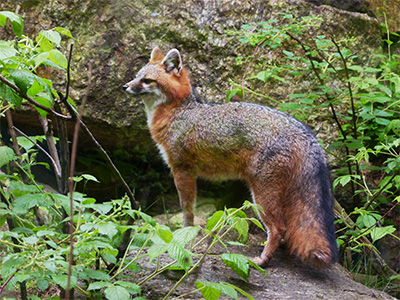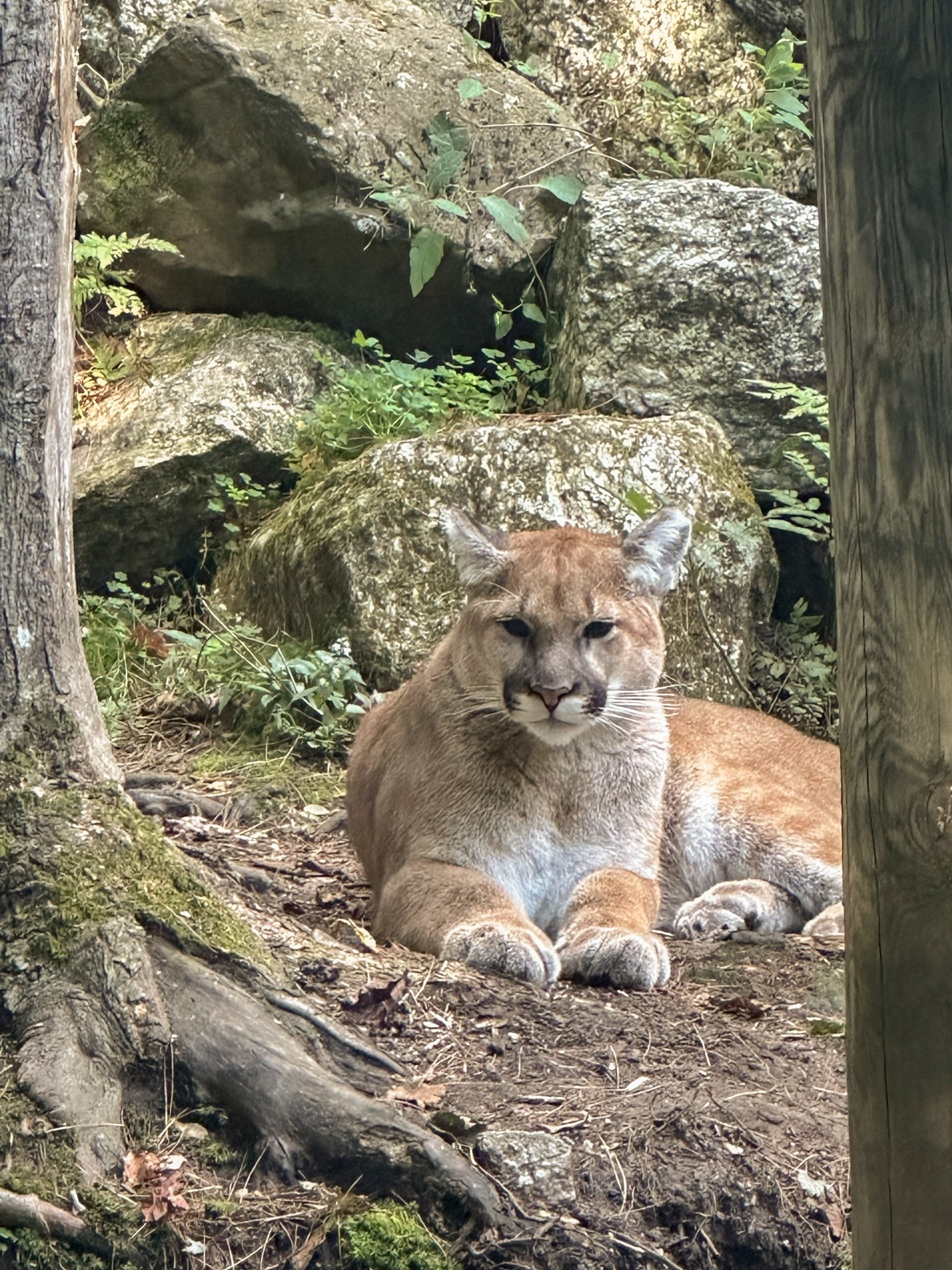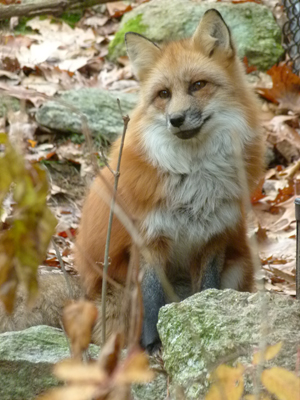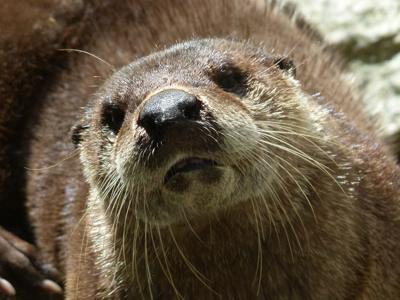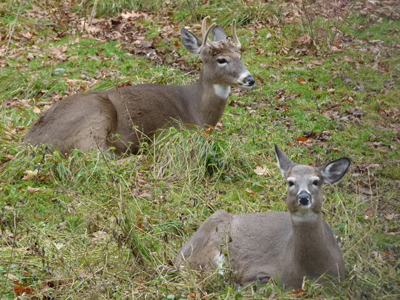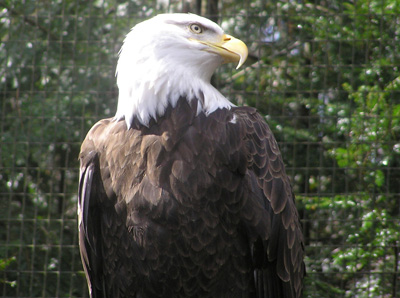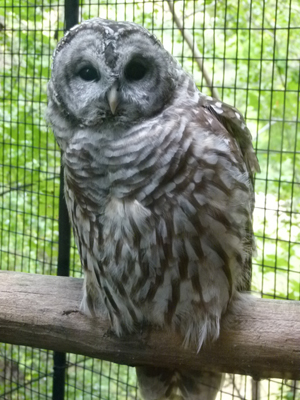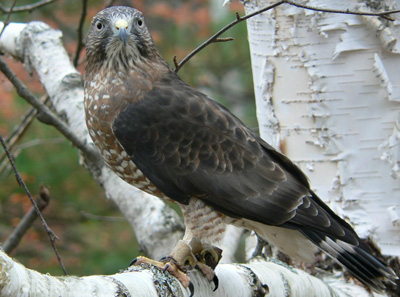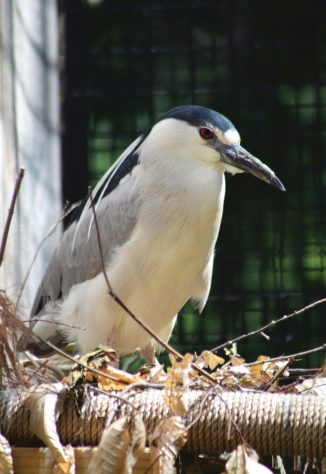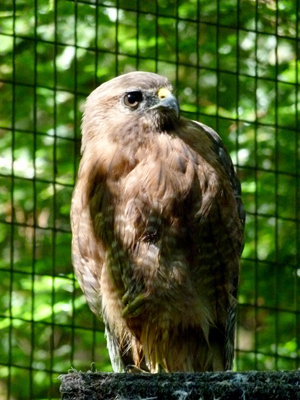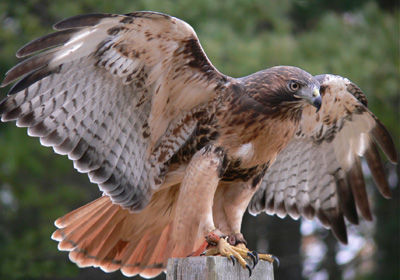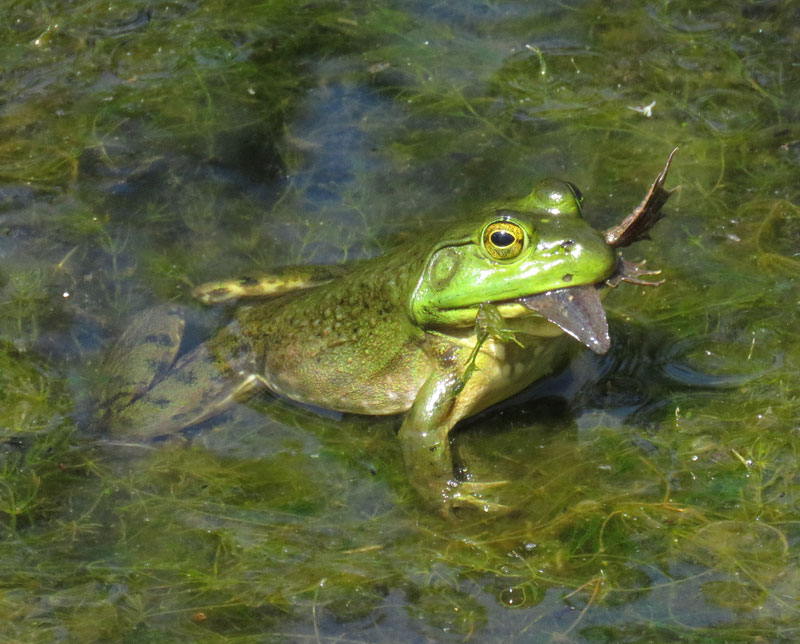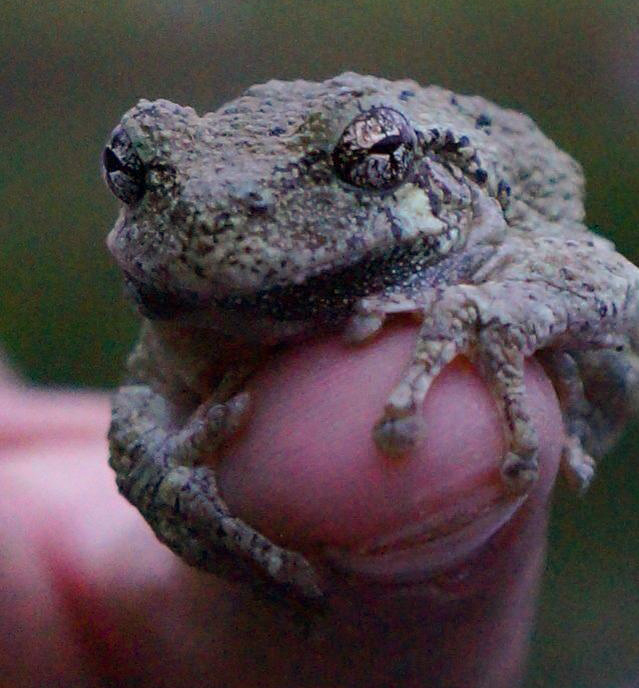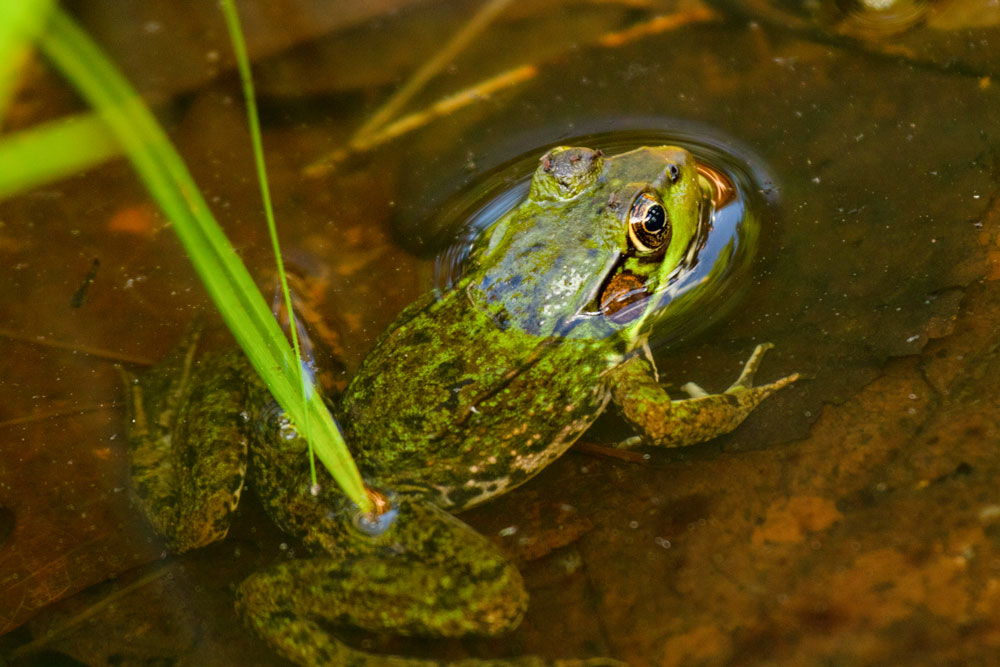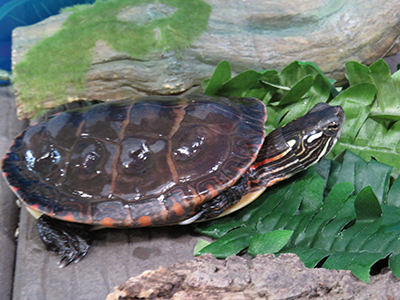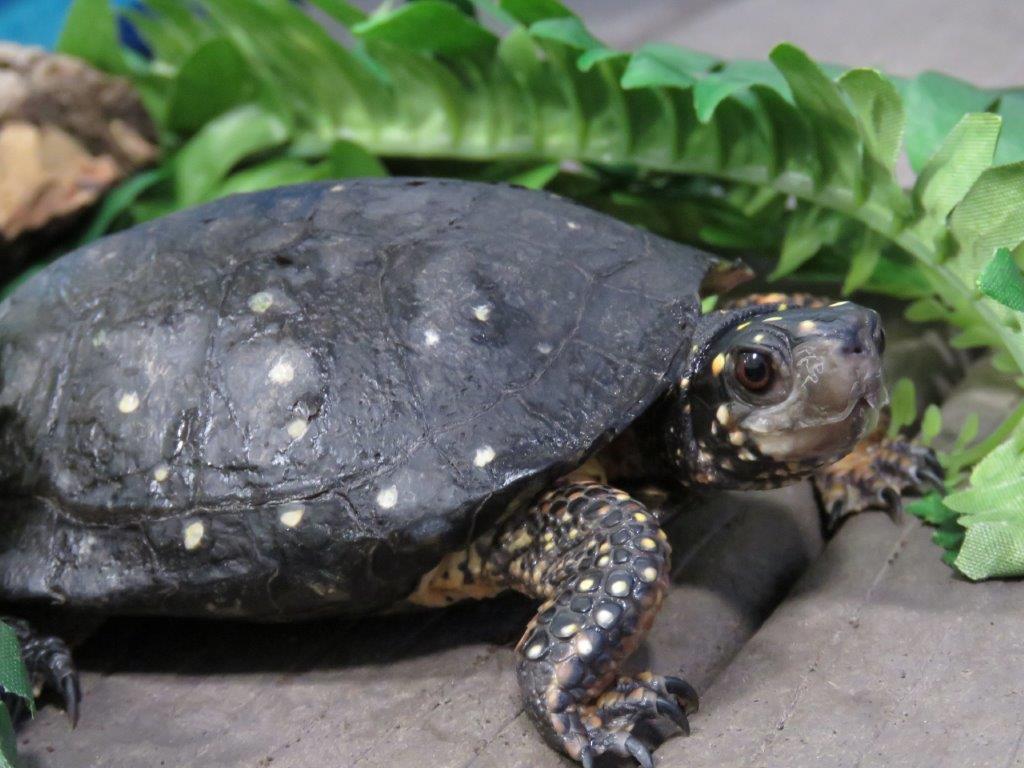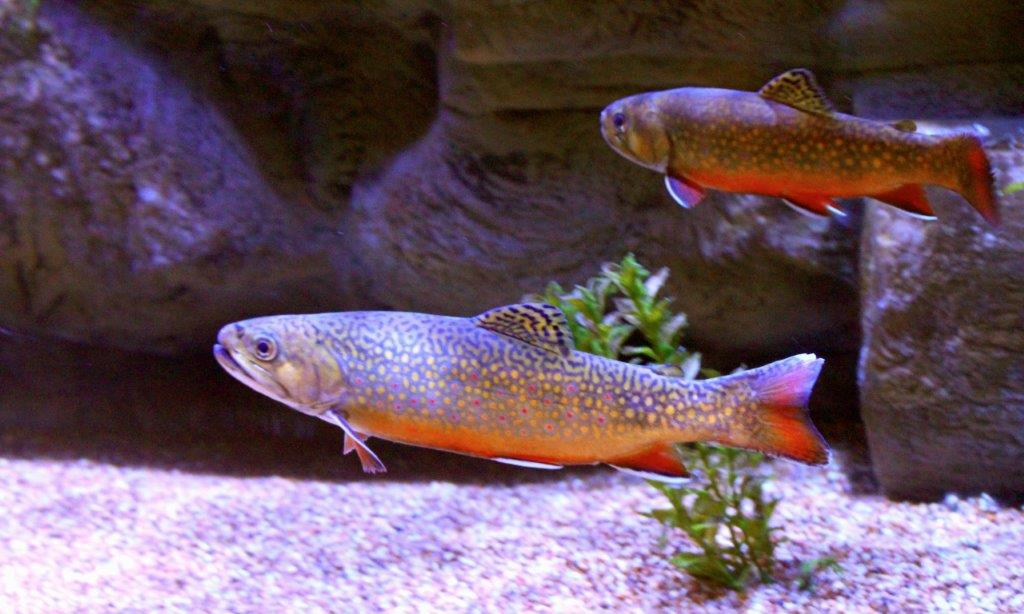Great Horned Owl
Bubo virginianus
| Kingdom | Animalia |
|---|---|
| Phylum | Chordata |
| Class | Aves |
| Order | Strigiformes |
| Family | Strigidae |
| Genus | Bubo |
| Species | B. virginianus |
| Lifespan | up to 13 years in the wild (banding record 27 years 9 months) |
| Size | 48-60 inch wingspan; weight: about 3 pounds |
| Eggs Laid | 1 to 4 eggs |
| Flight Speed | About 20-40 mph |
| Status | Somwehat Common |
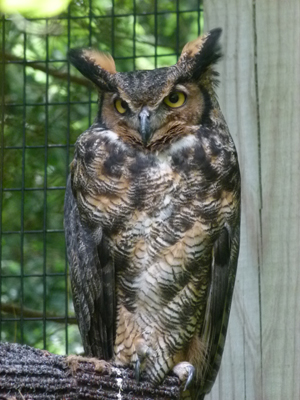
About Great Horned Owls
What are tips for identifying a Great Horned Owl?
Great Horned Owls are the largest North American owls with ear tufts. Their brown camouflaged feathers are offset by white throat feathers and bright yellow eyes. Females are larger than males. Hoots of this owl are deep and distinctive, consisting of five hoots – going with the phrasing “Who’s a-wake? Me too!” Great Horned Owls are widely distributed though southern Canada, the United States and into Central and South America.
What is the habitat of the Great Horned Owl?
These owls do not migrate and are territorial, staying within a home range of several hundred acres. They prefer dense forest (coniferous, hardwood or mixed) near open areas, utilizing by night the same areas as Red-tailed Hawks do by day. Roosting and nesting are often in evergreens.
How do they hunt and what is their prey?
Great Horned Owls usually hunt from a perch, swooping down to snatch prey with their talons. A wide variety of prey are taken including rodents like mice, squirrels and chipmunks, as well as rabbits, opossums, raccoons, skunks, bats, birds (other owls too), and frogs. They will also catch small prey by walking on the ground.
What are some special Great Horned Owl adaptations?
Owls are adapted to be nocturnal predators, with silent flight resulting from soft feathers and serrated wing edges. Their night vision is excellent (black and white rather than color) but they cannot move their eyes in the sockets. However their flexible necks, with 14 vertebrae instead of the seven humans have, enable them to turn their heads 270 degrees. Hearing is excellent, with asymmetrical ears that facilitate pinpointing the site of prey. Their powerful legs, feet and talons enable them to drag prey as heavy as eight or nine pounds even though they themselves weigh only three pounds.
Fun Facts!
- Have you heard of owl pellets? About eight to twelve hours after a Great Horned Owl has eaten, it regurgitates a three to four inch pellet of fur and bones. Its prey can be identified by the skulls in the pellet because an owl’s digestive juices don’t break down bone.
- Great Horned Owls are early nesters – they may be snow-covered on the nest as they incubate eggs in late January or February.





